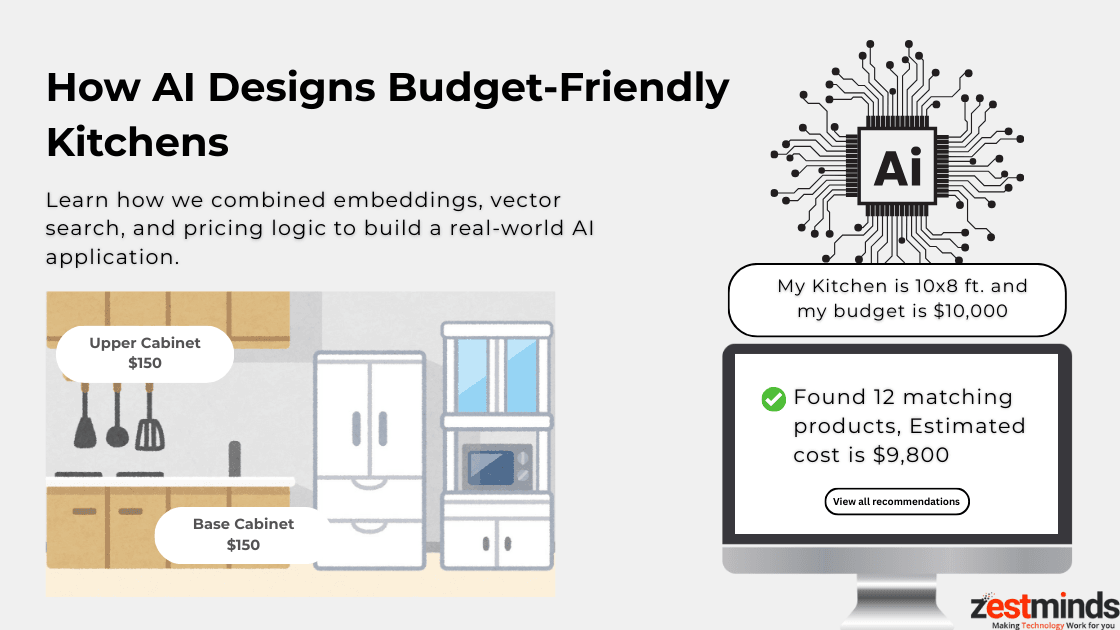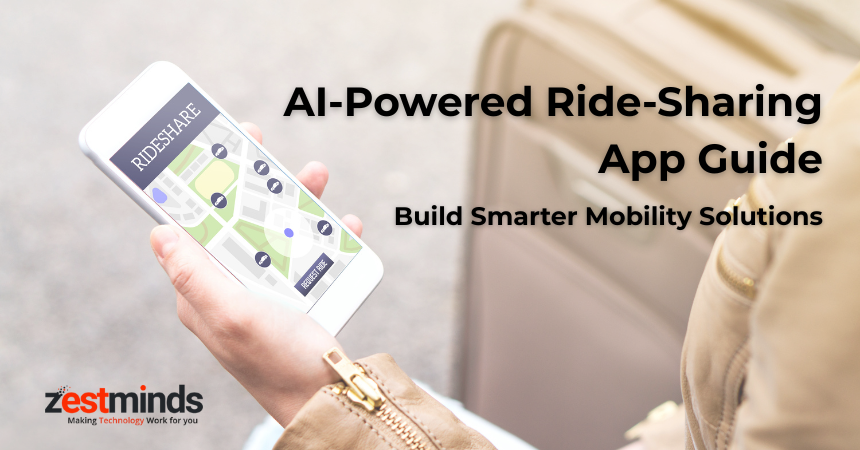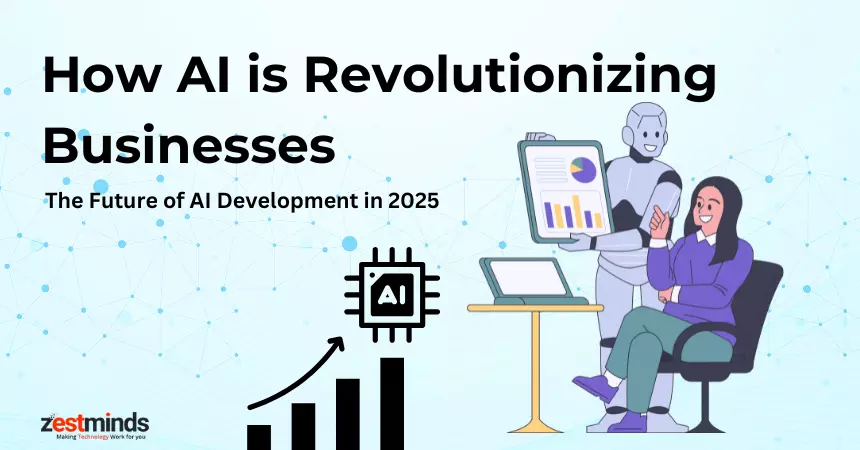How Startups Can Build AI Influencer & Agentic AI Platforms in 2025
Startups can now build AI influencer and agentic AI platforms that create, post, and engage at scale. This guide breaks down the roadmap (persona → avatar → LLM → agents), the tech stack, and proven business models. You’ll also learn how to launch a lean MVP, stay compliant, and grow into a marketplace in 2025. Perfect for founders, innovation teams, and VCs exploring the AI creator economy.
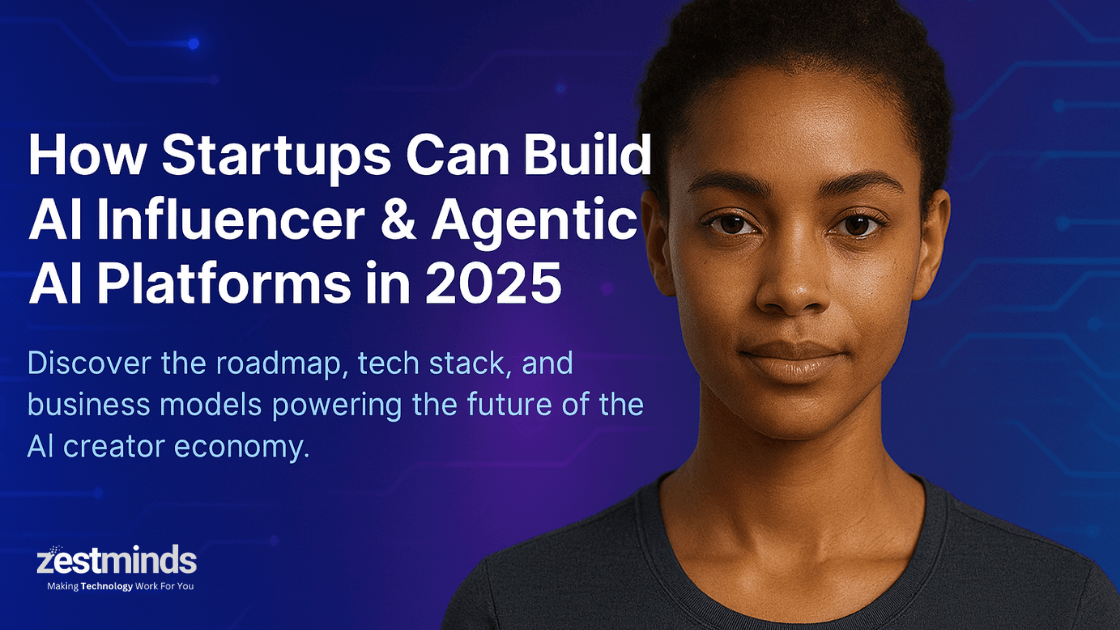
AI influencer platforms let startups launch virtual personas and Agentic AI agents that engage fans, strike deals, and grow communities at scale. With the right stack, avatars, LLMs, and APIs, you can move from idea to market quickly. 2025 is the tipping point: costs are down, tools are mature, and audiences are ready.
TL;DR: Define the niche and persona, build an avatar, add an LLM "voice," wire agentic workflows, launch a pilot, and scale into a marketplace. Bake in privacy and transparency from day one.
What Are AI Influencer & Agentic AI Platforms?
An AI influencer platform is a system that creates and manages digital personas to publish content, engage fans, and collaborate with brands without human scheduling limits. Agentic AI goes further: autonomous workflows post, reply, analyze, and optimize with minimal human input.
Think of human creators as solo musicians. AI influencers are studio bands. Agentic AI becomes the full orchestra with a conductor that never sleeps.
Human vs AI Influencer vs Agentic AI
This side-by-side table clarifies what each model does and when to use which.
| Model | How It Works | Strengths | Limitations | Best For |
|---|---|---|---|---|
| Human Influencer | Individual posting manually; creative control, lived experience, authentic voice. | Authenticity, nuance, spontaneity, real-world credibility. | Limited bandwidth; variable output; scheduling constraints; higher cost per post. | Brand storytelling, live events, premium collabs where human trust matters most. |
| AI Influencer | Digital avatar posting scripted or LLM-assisted content. | Always-on, consistent tone, scalable assets, brand-safe persona, lower marginal cost. | Needs guardrails; risk of sameness; requires disclosure and careful audience fit. | High-frequency content, multi-locale campaigns, rapid A/B testing of creative. |
| Agentic AI Influencer | Autonomous system that posts, engages, and analyzes with human-in-the-loop checks. | End-to-end automation, real-time optimization, personalized replies at scale. | Greater orchestration complexity; governance and compliance are essential. | Large programs, marketplaces, and brands needing 24/7 engagement and analytics. |
Why 2025 Is the Tipping Point
- Tech maturity: Advanced generators and multimodal models make ultra-realistic content affordable.
- Cost efficiency: Building an MVP today can cost 30-40% less than three years ago.
- Market acceptance: Millions already follow prominent AI personas and engage knowing they are AI.
- VC appetite: Investors actively scout startups building in the creator economy with AI.
In short: 2025 is when AI influencer platforms shift from novelty to necessity.
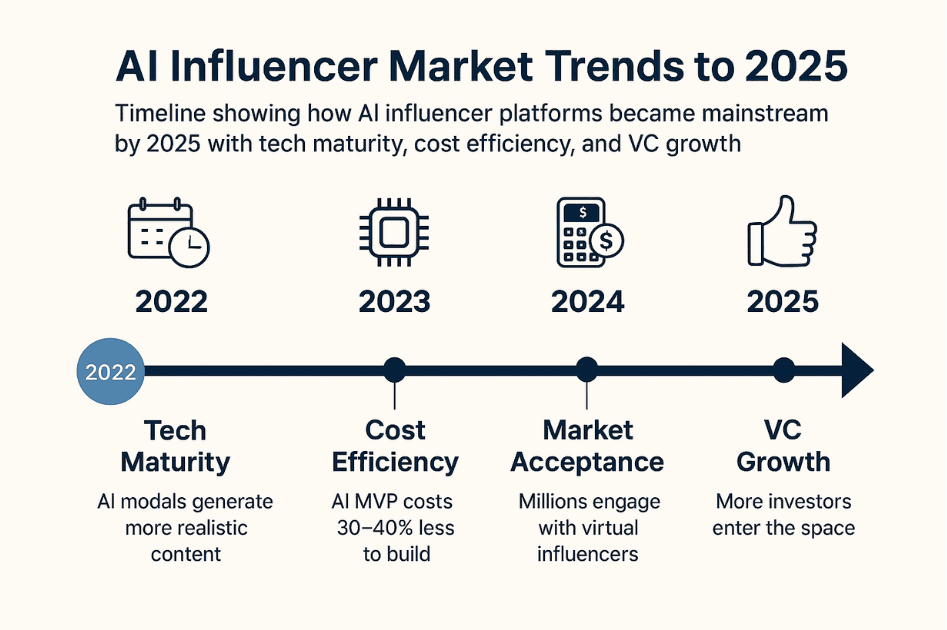
The Tech Stack You'll Actually Need
1) Avatars & 3D Modeling
Create lifelike digital personas and brand-safe IP. Teams commonly use real-time engines or image generators to produce consistent looks and motion.
Example: A gaming brand launches an AI esports commentator with a distinct visual style and on-brand tone.
2) Large Language Models (LLMs)
LLMs generate captions, scripts, replies, and long-form content aligned to persona and channel. Guardrails ensure tone, brand safety, and disclosure.
3) Agentic AI Frameworks
Agent frameworks orchestrate tasks such as scheduling, A/B testing copy, optimizing post timing, drafting outreach, and summarizing campaign analytics.
4) APIs for Social Platforms
Platform APIs connect publishing, comments, DMs, analytics, and ad tools so your AI can work where audiences live.
5) Backend Infrastructure
Cloud compute, microservices, queueing, and observability keep workloads smooth as content scales. Many teams combine containers, stream processing, and dashboards for reliability.
See how we design reliable AI-first systems in our AI-Powered Ride-Sharing App case study.
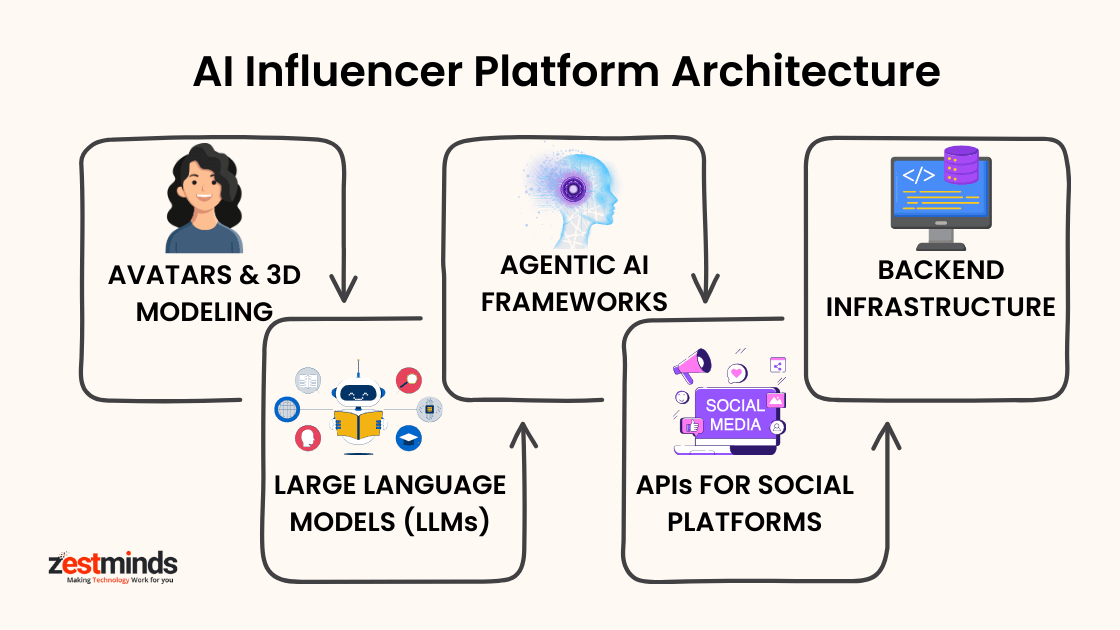
Business Models That Actually Work
- Brand collaborations: Sponsored posts, product placements, affiliate links.
- Subscriptions: Premium fan access and exclusive content.
- SaaS for agencies: White-label tools on a subscription plan.
- Marketplaces: Brands hire AI personas on demand with transparent pricing.
- Digital goods: Skins, avatar packs, and collectibles.
For industry context on performance and media impact, review reporting from MIT Technology Review and market sizing via Statista.
Challenges No One Talks About
- Trust and transparency: Clear AI disclosures build credibility and protect brand reputation.
- Privacy and compliance: Align with GDPR, CCPA, and DPDP; minimize personal data usage.
- Fan fatigue: Avoid repetitive content by mixing formats and cadence, and maintain a relatable story arc.
- Technical complexity: From avatar pipelines to cross-platform posting and analytics, orchestration matters.
If you prefer a partner who has solved these repeatedly, explore our AI development services.
Startup Roadmap: From Idea to Live AI Influencer
Step 1: Define Niche, Persona, and Guardrails
Pick one narrow niche where you can deliver unique value. Write a short persona doc: name, voice, visual cues, topics, red lines, and disclosure rules.
Step 2: Build the Avatar
Prototype a consistent visual identity. Create a small library of poses, expressions, and backgrounds so content is fast to produce.
Step 3: Give the Influencer a Voice
Fine-tune prompts and tone templates for captions, replies, and scripts. Add moderation and brand safety prompts. Maintain a style guide.
Step 4: Add Agentic Workflows
Automate scheduling, reply triage, and analytics summaries. Set human-in-the-loop checkpoints for sensitive actions such as paid deals.
Step 5: Launch a Pilot
Pick one channel, one content format, and a four-week calendar. Track leading indicators: saves, shares, watch time, and click-through rate.
Step 6: Scale Into a Marketplace
After repeatable results, introduce more personas and open a structured "book an AI influencer" flow for brands.
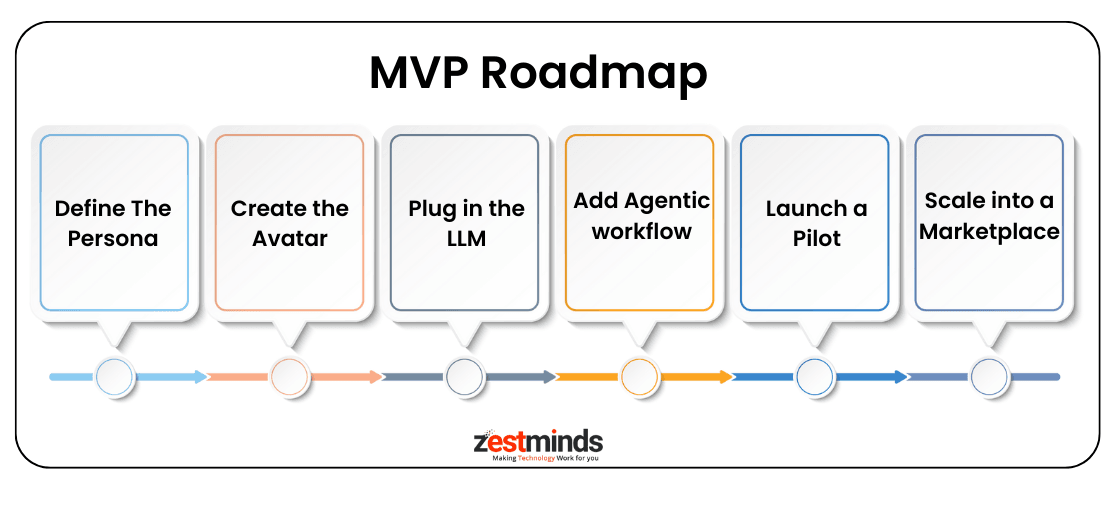
Example Story: FitAIfluencer
"Lina," an AI fitness coach, posts daily yoga routines on short-video platforms. Scripts come from an LLM, the avatar speaks with a consistent tone, and agentic workflows schedule posts and draft replies. Within six months, Lina passes 100K followers, secures affiliate revenue, and unlocks brand partnerships. The team scales to an AI wellness marketplace with multiple personas.
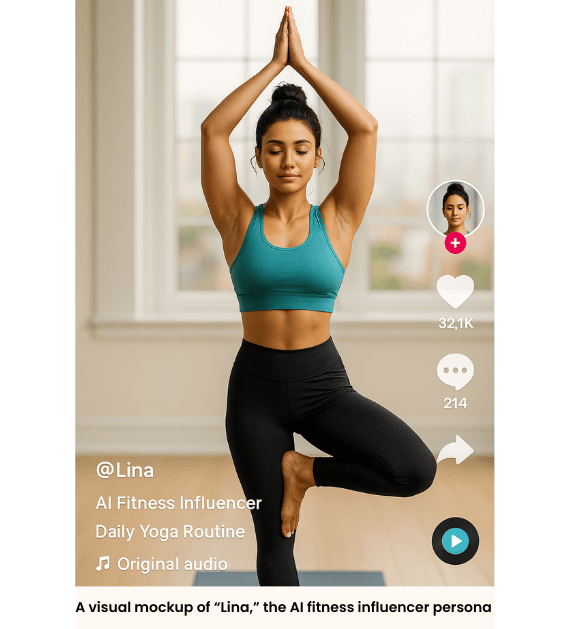
MVP Development With Zestminds
Moving fast without breaking trust is the real advantage. Our MVP development services help founders validate the concept quickly, keep scope lean, and ship something investors and customers can touch.
- Strategy sprint: Persona, value prop, scope, and success metrics in days.
- Lean architecture: A pragmatic stack for content generation, agent workflows, and analytics.
- Compliance by design: Consent flows, logging, and data-minimization patterns.
- Road to scale: From single persona to multi-influencer marketplace.
For full-stack delivery and integration, explore our AI development and read our engineering perspective on performance in building scalable web apps with Node.js and microservices.
Responsible AI: Disclosure, Safety, and Governance
Audiences accept AI when they feel respected. Disclose clearly, moderate responses, and honor platform rules. Keep a human override for edge cases.
For ongoing research into agent behavior and safety alignment, follow updates from OpenAI Research.
Go-To Market Playbook
Positioning
Lead with the benefit and make disclosure a feature, not a footnote. Show the behind-the-scenes craft and guardrails.
Channels
- Short videos demonstrating prompt-to-post workflows.
- Monthly benchmarks and case snippets to build credibility.
- No-cost ideation call for qualified founders and innovation teams.
Offers
- Free 30-minute AI Influencer Ideation Call for startups and brand labs.
- Pilot package including one persona, 30-day content plan, and KPI dashboard.
Validate Your AI Influencer Idea With Zestminds
Have a concept for an AI influencer or marketplace and want to see it live this quarter? Book a free strategy call. We turn ideas into testable MVPs with compliance, analytics, and scale in mind.
Book your free strategy call with Zestminds
Summary: Why This Opportunity Matters Now
- The creator economy is growing fast and is hungry for scalable, brand-safe personas.
- Tools and costs finally favor lean teams and fast MVPs.
- Early movers will own niches and data moats that late entrants can't easily copy.
The question is no longer if AI influencer platforms will scale. It's whether your startup will lead the category.
FAQs
What is an AI influencer platform?
A system that manages AI-generated personas to create content, engage fans, and collaborate with brands across channels.
What is agentic AI in this context?
Autonomous workflows where AI plans, posts, replies, and analyzes with human-in-the-loop controls for sensitive actions.
How much does it cost to build one?
MVPs typically range from $50K–$200K depending on avatar fidelity, integrations, and governance needs.
Which industries benefit first?
Fashion, fitness, gaming, fintech, lifestyle, and entertainment see early traction due to visual storytelling and community dynamics.
Can small startups build these platforms?
Yes. With today's APIs and frameworks, lean teams can launch quickly and iterate with real data.
Is it ethical to use AI influencers?
Yes, if you disclose clearly, respect user privacy, and avoid deceptive impersonation or misrepresentation.
Will AI replace human influencers?
Unlikely. The highest ROI is emerging from hybrid strategies combining human authenticity with AI scale.

Shivam Sharma
About the Author
With over 13 years of experience in software development, I am the Founder, Director, and CTO of Zestminds, an IT agency specializing in custom software solutions, AI innovation, and digital transformation. I lead a team of skilled engineers, helping businesses streamline processes, optimize performance, and achieve growth through scalable web and mobile applications, AI integration, and automation.
Stay Ahead with Expert Insights & Trends
Explore industry trends, expert analysis, and actionable strategies to drive success in AI, software development, and digital transformation.
